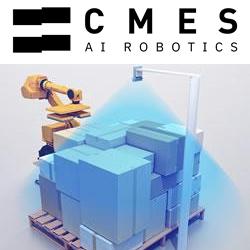An Open Source Driving Agent from comma.ai
Future Drones Will Fly as Silent as Owls, as Steady as Bees
DIY Position Tracking Using HTC Vive's Lighthouse
Was That an Insect or a Drone?
Autopilot vs. Autonomous
Carnegie Mellon Successfully Exploiting Manufacturing Robots
Sensitive Environment Robots
Japan Robots Riding on the Concept of Entertainment, Ease of Life and Engaging
Quick Overview of 4D Graphics
Innovative Robotic Technology Improves Safety in Hazardous Locations
Going Where No Man Has Gone Before: What Does the Future Hold for Automation in the Service Industry?
AI-powered Motion
Deep-Domain Conversational AI
Who's Driving That Truck?
Developing Communications and Mapping for a New Generation of Driverless Cars
Records 466 to 480 of 716
First | Previous | Next | Last
Featured Product

